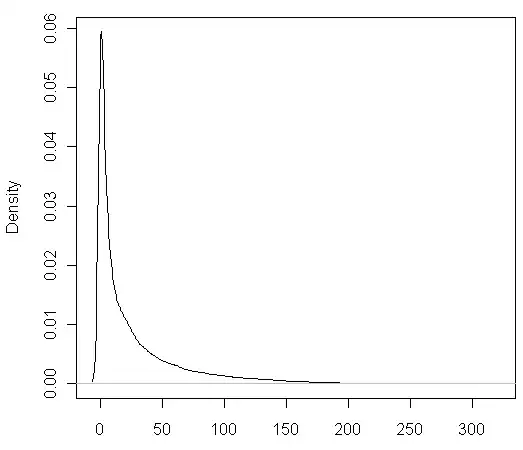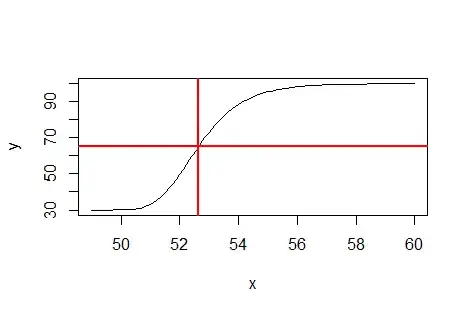$C$ is manifestly a location parameter.
It helps to understand that when $x$ and $y$ have a unit of measure, the choices of their origin and basic unit are essentially arbitrary. You can exploit that to make choices that simplify the formula and therefore reveal the essential shape of the curve.
Mathematically, this means you should rewrite the formula $y=f(x;\theta)$ in the form
$$\frac{y - \nu}{\tau} = f_0\left(\frac{x-\mu}{\sigma}; \theta^\prime\right)$$
where $\theta^\prime$ has four fewer parameters than $\theta=(A,B,C,D,S).$
In terms of the graph $\Gamma(f)=\{(x, f(x;\theta))\mid x\in \mathbb R\}$ this has the familiar geometric interpretation: the transformation of $x$ stretches the horizontal axis by $\sigma\gt 0$ and then shifts that axis by $\mu;$ the transformation of $y$ is the inverse of a rescaling by $\tau$ and shift of $\nu.$ Equivalently, on a plot of $\Gamma(f_0)$ simply relabel any ordinate $x$ as $\mu+x\sigma$ and any abscissa $y$ as $\nu + y\tau.$
This can usually be done by inspection. In the present case, the curve takes the form
$$y = f(x; (A,B,C,D,S))$$
which with simple algebraic manipulations can be written
$$\frac{y-\nu}{\tau} = \frac{y-A}{D-A} = \left(1 + \exp(-B(x-C))\right)^{-S} = \left(1 + \exp\left(-\frac{x-\mu}{\sigma}\right)\right)^{-S}$$
from which we can just read off the equations
$$\tau=D-A,\ \nu = A,\ \mu=C,\ \sigma=\frac{1}{B}$$
and identify the underlying shape as
$$f_0(z;S) = \left(1 + \exp(-z)\right)^{-S}.$$
To understand these particular shapes, plot them on semi-log axes: that is, consider the graphs of $\log_2(y) = \log_2(f_0(x)) = -S\log_2(1 + \exp(-x)).$

Evidently $S$ is the value of $\log_2(y)$ when $z=0:$ that is, it establishes a logarithmic scale for $y$ by making the value of $f_0(0)$ equal to $S.$ Given this interpretation of $S,$ $\mu = C$ becomes meaningful as corresponding to the unique point where $\Gamma(f_0)$ equals $S.$


